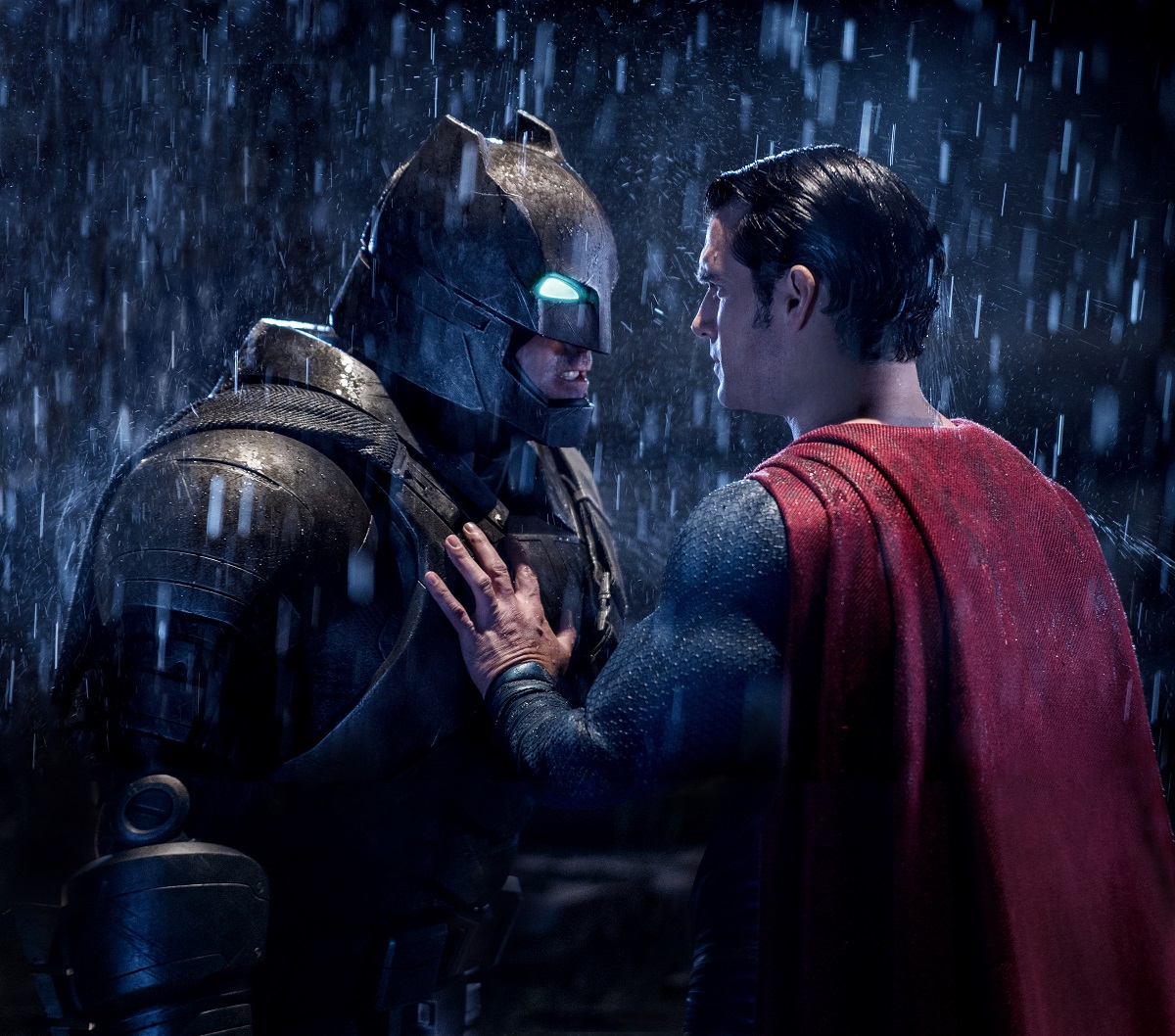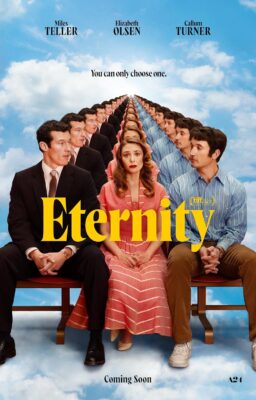“Batman v Superman: Dawn of Justice” may have under-performed critically and financially, but the film is too eccentrically ungainly and titanically morose to be swept under the rug when the next wave of Marvel movies comes around. Like it or not, “Dawn of Justice” is exactly the film its creators intended it to be: a provocative apocalyptic fantasy. It’s just as much a disaster film as it is a superhero narrative. It is not, however, a typical disaster film, but rather a post-disaster movie that takes place between one catastrophe and the next.
Godzilla sequels are good examples of the post-disaster sub-genre since Godzilla films take place in a universe where a singular, personified threat exists, and must be dealt with—even if that threat (ie: Godzilla) is inevitably the only thing standing between one major disaster and the next disaster. “Dawn of Justice”‘s fears of a post-9/11 landscape are palpable, and they tend to make the film’s more generic disaster movie elements a joyless slog: disaster is a certainty, an unavoidable reality that has happened, and therefore can—and perhaps inevitably must—happen again. They also make the film an unusual, conceptually intriguing anomaly. This really isn’t your daddy’s superhero movie … it’s much more depressing than that.

Superman in “Dawn of Justice” is like Godzilla in “Godzilla vs. the Smog Monster:” People in the film fear him, but viewers know he’s not the real threat. In the film’s introductory sequence, Bruce Wayne (Ben Affleck) relives General Zod’s near destruction of Metropolis, Superman’s home. We have presumably seen these events from a different perspective, but many “Man of Steel” viewers came away from that film with the same point-of-view as Wayne in “Dawn of Justice”: Superman (Henry Cavill) is responsible. You can’t help but come to that conclusion after you see what Wayne sees: a colleague destroyed in a wantonly razed office building; traumatized, maimed innocents threatened by crumbling debris; space invaders so unconcerned with property damage that they plow through buildings, shearing off the sides of parallel skyscrapers. Why didn’t the government—I mean Superman—stop this? Who’s to blame?
Not Superman, actually. In fact, if anyone can be blamed for the precipitation of the film’s new apocalyptic threat, Doomsday, it’s Wayne and/or his villainous foil Lex Luthor (Jesse Eisenberg). Which is interesting because Wayne is a hero. Mostly.
We begin with the assumption that both Luthor and Wayne want to do the same thing: prevent the next disaster. But nobody listens to these guys, especially not Senator Finch (Holly Hunter). This is a typical power dynamic at the start of disaster movies like “Meteor,” “Earthquake,” and “The Towering Inferno“: the writing is on the proverbial wall, but no authority figure notices or cares. Think of “Jaws“—nobody with power listens to Roy Scheider and Richard Dreyfuss’s Nostradamus-like doomsayers when they suggest that Amity’s beach must be evacuated.
That familiar trope gets complicated in a post-disaster movie like “Dawn of Justice.” People are so afraid that lightning will strike twice that they actually create a new threat. The difference is that Wayne’s personal experiences have led him to his Super-hatred, while Luthor is just … well … an impotent bad guy who mutters about having knowledge but no power. Wayne is accordingly a flawed, but positive, even compelling anti-hero in “Dawn of Justice” while Luthor is just a reflection of the evil Wayne might do while presuming to protect us from an ostensibly worse threat.
This is where parallels between the movie world and our world start to become less clear: Luthor is not really like the George W. Bush administration going to war after a terrorist attack. He wages a war to save humanity, but he’s a lone wolf acting without anyone’s support or approval. The same is true of Wayne. Neither man represents anyone’s interests but their own. They believe they speak for us, but they don’t really represent the people.

If anything, both men are likened to terrorists. In his search of a mysterious figure named “The White Portuguese” (in reality, a ship owned by Lex Luthor), Wayne compares Luthor to a terrorist when he tells butler and confidante Alfred Pennyworth (Jeromy Irons) that he’s sure that the White Portuguese has materials to create a dirty bomb. This mirrors the Bush administration’s quest for Saddam Hussein’s non-existent Weapons of Mass Destruction (WMD). The main difference between Wayne and the Bush regime is that Wayne not only know that Luthor doesn’t have a dirty bomb, but rather a cache of Kryptonite that he plans to use as a fail-safe to stop Superman.
Wayne and Luthor are accordingly compared to terrorists. “Dawn of Justice” is, after all, an homage to comics pioneer Frank Miller’s “The Dark Knight Returns” and his more recent work post-9/11. Miller, a libertarian war-hawk who now admits that the Iraq War was a mistake, treats Batman as a misguided figure who is nevertheless right for springing into action and adopting guerrilla-style methods to stop threats to democracy that nobody else sees coming. In “Holy Terror,” Miller imagines a Batman-like anti-hero named the Fixer who prepares for a 9/11-type event long before he even knows one is coming. When that disaster arrives, he acts. This is the day he’s dreaded/dreamed of for so long.

“Dawn of Justice” similarly positions Wayne as a post-disaster martyr, a flawed seismographer whose temper will need be reined in once Wonder Woman (Gal Gadot) and Superman join him in fighting Luthor. Still, Wayne is only made to see the error of his ways after an actual disaster forces him to work on a team: the emergence of Doomsday, a monster that Luthor creates as a secondary Super-deterrent.
Wayne could have easily become a Luthor-style Dr. Frankenstein. He’s even manipulated into becoming Luthor’s third method of stopping Superman when Luthor provokes Wayne into action by talking trash about Wayne’s dead parents while pretending to be Superman. Snyder and the gang are probably too sympathetic to Wayne’s disillusioned perspective since they don’t show just how unbalanced a mind has to be employ extreme methods like a hulking battle-suit and a Kryptonite bullet-loaded rifle to stop Superman. In a disaster movie, a team always fixes what the individual can’t do alone. In this case, that’s because one team member is actively rebelling against the others until they force him to snap out of his hysterics and focus on the disaster at hand: Doomsday.
Wayne’s paranoid prophesying is not just an essential plot contrivance: his morally relative stance is the subject of “Dawn of Justice” and its post-9/11 view of a monumental terrorist attack. On the one hand, there is some truth to what an actual terrorist tells Lois Lane (Amy Adams) when he insists that ignorance is not the same thing as innocence. That provocative statement begs viewers to question whether or not Superman is completely innocent. It also compares Superman with the Bush regime, and aligns him with Wayne: how can these two men be innocent when they’re not fully aware of the negative consequences of their actions?
On the other hand, Luthor is also somewhat correct for saying that the powerful cannot be innocent. Luthor says this right before he tries to get Superman’s attention by pushing Lane off of a building, but he could easily be talking about the US President in “Dawn of Justice,” who combats a new kind of war with a weapon from a much older war: an atom bomb that winds up supercharging Doomsday, making him more powerful than Superman. Luthor is right because in this case, the President deliberately unleashes a dangerous weapon without any goal in mind except “end this war.”
In that sense, the disaster that looms over “Dawn of Justice” isn’t just a couple of escalating super-hero brawls, but rather a miniature war waged by a group of super-humans. The film’s big set pieces aren’t supposed to be pleasurable since they’re essentially a PTSD-inflected repetition of “Man of Steel”‘s chaotic finale. Any disaster-type action scene, particularly a “Poseidon Adventure”-esque moment where Lois Lane (Amy Adams) is trapped underwater, is treated like a joyless crisis. There are no survivors and heroes here, just combatants, and losers. You can’t really enjoy these scenes, especially not the main bout between Superman and Batman, because they’re endurance tests. Special emphasis is put on the heaviness of blows (Batman crashed through that wall but good!) and the intensity of flames (Superman’s X-ray vision flares up like like a bull’s nostrils in several scenes). At its worst, “Dawn of Justice” comes on too strong, which makes it more of a curate’s egg than an unqualified success. Still, we’ll be lucky if we got more bruising blockbusters like it than more of the same from Marvel, DC, and anyone else who wants to capitalize on our latest love affair with superheroes.












